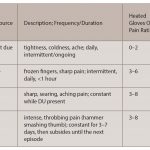(Reuters Health)—Fluorescent lotion and black light revealed that healthcare workers often contaminate their skin and clothing while removing their protective gear, researchers say.
This contamination can spread germs and place the healthcare workers at risk for infection, the authors write in JAMA Internal Medicine.
“It was surprising for the participants in the study to see that they frequently contaminated themselves during (personal protective equipment) removal,” said senior author Dr. Curtis J. Donskey of the Cleveland Veterans Affairs Medical Center.
“Most of the participants appeared to be unaware of the high risk for contamination and many reported receiving minimal or no training in putting on and taking off (personal protective equipment),” he told Reuters Health by email.
Contaminated personnel can also spread pathogens to other susceptible patients.
The researchers recruited doctors, nurses and other healthcare personnel such as phlebotomists and physical therapists at four Cleveland-area hospitals to participate in the simulations. More than half of the 435 simulations were performed by nurses.
The participants put on protective gowns and gloves in their usual manner and then had a small amount of fluorescent lotion placed in the palm of their hands, which they then rubbed between their hands for 15 seconds to simulate dirtied gloves, then smeared the gloves over the chest and abdomen area of the gown. Then the gloves were exchanged for clean ones.
After they removed their gloves and gowns in their usual manners, researchers used a black light to check for lotion contamination of the hands, forearms, neck, face, hair or clothing.
Skin or clothing contamination happened 46% of the time, more frequently during glove removal.
Researchers also noted whether participants had used proper protective equipment technique, e.g., wearing gloves extended over the wrists of the gown, gown removed first by pulling away from the neck and body, and gloves removed second.
Contamination happened 70% of the time when proper technique was not followed, compared to 30% of the time when it was followed.
“When dealing with pathogens that are potentially fatal, the goal has to be zero contamination,” Donskey said. “In routine care settings, we would like personnel to be well trained and confident that they can minimize contamination, but would not insist on zero contamination.”
It is important for personnel to perform hand hygiene after removing gloves and gowns since contamination could have happened, he said.
The researchers also conducted these tests with a group of personnel who had attended special infection control sessions, with a 10-minute video presentation and 20 minutes of demonstrations and practice in using and removing protective gear.


